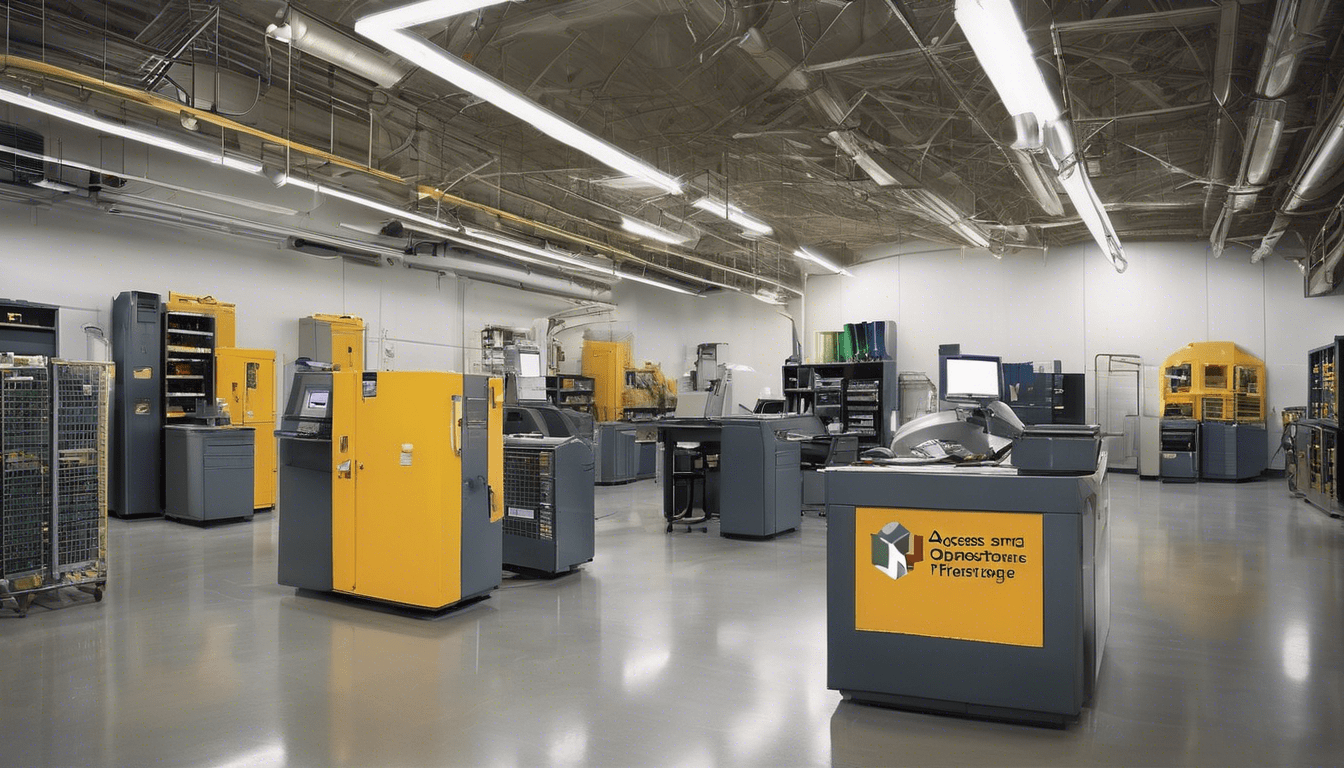Third-party maintenance services offer a strategic opportunity to reduce costs and boost operational reliability. Unlike OEM support, these services provide flexible, cost-effective solutions tailored to diverse industries, from healthcare to manufacturing. Understanding how they complement or even replace traditional support enables organizations to optimize uptime and extend equipment life. Examining key factors for choosing reliable providers ensures informed decisions, fostering resilient operations while unlocking significant savings and efficiency gains.
Overview of Third-Party Maintenance Services
Understanding the role and impact of alternative support solutions
Also read : Is the Future of High-Tech Spurring Investment in UK Computing?
Third-party maintenance (TPM) services involve external providers that offer support and upkeep for hardware and IT infrastructure outside the original equipment manufacturer (OEM). Unlike OEM maintenance, which strictly uses manufacturer’s protocols and parts, third-party maintenance focuses on cost-effective solutions tailored to prolong equipment life, reduce downtime, and provide flexible service agreements.
One of the primary distinctions between OEM and third-party maintenance is pricing structure. Third-party providers usually offer more competitive rates without compromising quality, making TPM an attractive option for companies aiming to optimize IT budgets. They also tend to provide quicker response times, as they are not constrained by the OEM’s formalities and extensive approval processes.
Additional reading : Unlocking productivity: your guide to ai personal assistants
Industries such as data centers, telecommunications, healthcare, and manufacturing commonly benefit from third-party maintenance. These sectors rely on uninterrupted performance and require risk mitigation strategies—making TPM ideal for sustaining mission-critical operations. Choosing third-party maintenance allows organizations to extend hardware lifecycle and enhance service flexibility, which is crucial in today’s fast-paced technological environment.
For detailed guidance on how third-party maintenance can save costs while simplifying IT support, see Third-Party Maintenance Solutions.
Benefits of Using Third-Party Maintenance Services
When considering cost-reduction strategies, third-party maintenance services offer significant advantages over original equipment manufacturer (OEM) support. These services typically provide lower service and maintenance costs, helping organizations save substantial amounts on their IT infrastructure expenses. Unlike the often rigid and premium-priced OEM contracts, third-party providers deliver flexible service plans that can be tailored to match specific operational needs, ensuring you pay only for what you truly require.
Industries ranging from healthcare to finance have reported measurable savings by shifting to third-party maintenance. For example, companies have reduced their annual maintenance expenditure by up to 40%, freeing budgets to invest in other critical areas. This flexibility not only enables better cost management but also aligns maintenance with business priorities.
Beyond cost, third-party maintenance services play a pivotal role in improving operational efficiency and uptime. By offering faster response times and reducing equipment downtime, these services ensure smoother operations. Access to specialized expertise and a wide inventory of replacement parts means issues are resolved quickly and accurately. This proactive approach also extends the lifespan of equipment, preventing premature replacements and preserving capital investment.
Adopting third-party maintenance is a proven way to balance budget constraints while maintaining system reliability. For organizations aiming to optimize their IT infrastructure without sacrificing performance, understanding these benefits is essential. Explore how to save big and simplify IT with third-party maintenance solutions here.
Comparing OEM Support and Third-Party Maintenance
When deciding between OEM support and third-party maintenance, understanding their respective strengths is crucial. OEM maintenance services provide the advantage of direct manufacturer expertise, ensuring access to genuine parts and timely updates tailored specifically for their equipment. This often results in high reliability and warranty compliance, which is significant in data centers or critical infrastructure environments.
However, OEM support can be costly and inflexible. Service contracts might include high fees, strict terms, and limited customization, which may not suit every organization’s operational needs or budget constraints.
Third-party maintenance offers an alternative that can either complement or replace OEM support. These providers often deliver more cost-effective, flexible service agreements, enabling organizations to extend equipment lifecycles beyond the original warranty. They can respond rapidly to diverse environments and provide personalized support plans, which is a considerable benefit for complex IT infrastructures.
Choosing between OEM and third-party solutions depends on factors such as budget, system criticality, and required service levels. For example, if maximum uptime and guaranteed use of official parts are priorities, OEM support might be preferable. Conversely, if reducing maintenance expenses and gaining service flexibility are key, third-party maintenance services should be strongly considered.
Evaluate these critical aspects:
- Cost versus value in the context of your operational requirements
- Flexibility of service plans and contract terms
- Access to authentic parts and manufacturer expertise
- Impact on warranties and long-term equipment management
Organizations seeking to balance reliability with cost-efficiency will find that integrating third-party maintenance solutions can simplify IT operations without sacrificing performance. Detailed guidance about leveraging third-party options can be found at https://evernex.com/data-center-third-party-maintenance/.
Criteria for Selecting Reliable Third-Party Maintenance Providers
When choosing a third-party maintenance (TPM) provider, it is essential to focus on key criteria that ensure reliability and value. First, verify the provider’s certification and industry experience. Certified providers adhere to recognized standards, reducing risk and ensuring quality in maintenance services. Their reputation, built through years of successful service delivery, speaks volumes about their reliability and professionalism.
Next, examine the service level agreements (SLAs) offered. These contracts should clearly define response times, resolution targets, and support availability. High-quality customer support is critical—responsive, knowledgeable teams can prevent downtime and swiftly address issues. Providers offering 24/7 customer support demonstrate their commitment to client success.
Flexibility and scalability are vital as well. A reliable TPM partner can adapt services to meet evolving business needs, whether expanding geographic coverage or customizing support plans. Geographic reach matters, especially for organizations with multiple locations, as it ensures consistent maintenance quality wherever your equipment operates.
In summary, selecting a TPM provider requires careful evaluation of certification, SLAs, support quality, flexibility, and coverage. Prioritize these criteria to secure a maintenance partner that aligns with your operational demands and long-term goals. For a deeper dive into third-party maintenance solutions, consider exploring resources such as https://evernex.com/data-center-third-party-maintenance/.
Implementation and Best Practices
Transitioning smoothly from OEM support to third-party maintenance (TPM) is crucial to avoid operational disruptions. Begin by thoroughly auditing your current infrastructure to identify critical components and establish clear service-level agreements (SLAs) with your TPM provider. This ensures that expectations around response times and repair quality are transparent and aligned.
To guarantee service consistency and quality control, it’s essential to maintain regular communication channels with your third-party maintenance partner. Establish routine performance reviews using key metrics such as uptime percentages, mean time to repair (MTTR), and customer satisfaction scores. This systematic monitoring helps catch any deviations early and fosters continuous improvement.
Over time, evaluating the TPM provider’s effectiveness involves both qualitative and quantitative analysis. Beyond service metrics, gather user feedback from your IT teams to assess real-world support experiences. Incorporating these insights facilitates informed decisions on contract renewals or adjustments. Utilizing frameworks like https://evernex.com/data-center-third-party-maintenance/ can further simplify managing third-party maintenance relationships and enhance cost efficiency.
Industry-Specific Applications of Third-Party Maintenance
Exploring tailored solutions across sectors
Third-party maintenance (TPM) plays a critical role in enhancing operational efficiency across various industries by providing specialized equipment servicing and support. In the healthcare sector, TPM focuses on medical equipment maintenance, ensuring devices such as MRI machines, ventilators, and patient monitoring systems remain reliable and compliant with rigorous safety standards. This proactive maintenance helps prevent costly downtime and supports patient care continuity.
In data centers, TPM is invaluable for server and network hardware servicing. Data centers require uninterrupted uptime, and third-party maintenance offers rapid response capabilities and cost-effective repair options compared to original manufacturers. TPM providers often supply bespoke services, including firmware updates and part replacements, tailored to the complex infrastructure of data centers. For more information on optimizing data center maintenance, visit this resource.
Manufacturing facilities benefit from TPM through expert machinery and production line support. This includes preventative maintenance, troubleshooting, and fast access to spare parts, minimizing production halts that can result in significant losses. TPM services in manufacturing are designed to prolong equipment life and enhance throughput by leveraging technical expertise across diverse machinery types.
By focusing on industry-specific challenges, third-party maintenance providers deliver solutions that align with operational priorities, regulatory compliance, and cost containment goals.
Customer Testimonials and Case Studies
Real-world examples show that third-party maintenance (TPM) can deliver significant cost savings and operational improvements. Companies across various industries report reductions in maintenance expenses by up to 40%, demonstrating the tangible financial benefits of switching from original equipment manufacturers (OEMs) to trusted TPM providers. These savings often stem from more flexible service agreements and tailored support that align with specific data center needs.
Industry leaders emphasize the importance of clear communication and detailed service-level agreements when adopting third-party maintenance. Lessons learned include prioritizing responsiveness and technical expertise in TPM partners to ensure seamless operations. Organizations that have successfully integrated TPM highlight how it enabled them to extend hardware lifecycles and avoid costly equipment replacements.
Quantitative data backs these claims: one case study revealed a 35% increase in uptime after implementing third-party maintenance, underscoring how expert support reduces downtime. Additionally, clients experience faster issue resolution times due to the specialized focus of TPM teams. These successes affirm that engaging a third-party maintenance provider can improve both reliability and budget control in data center management.
For more insights into how companies optimize their operations with TPM, explore https://evernex.com/data-center-third-party-maintenance/. This resource offers detailed information on maximizing efficiencies and cost-effectiveness through expert third-party maintenance solutions.
Final Considerations and Future Trends
Emerging perspectives for third-party maintenance
As organizations increasingly adopt third-party maintenance solutions, understanding emerging trends becomes essential for strategic planning. One significant trend is the integration of advanced predictive analytics and AI technologies within third-party maintenance services. By leveraging machine learning algorithms, providers can forecast potential hardware failures before they occur, significantly reducing downtime and repair costs.
Investing in third-party support offers organizations benefits such as enhanced flexibility in vendor selection and substantial cost savings. However, challenges persist, including maintaining consistent service quality across diverse hardware environments and navigating evolving warranty and licensing agreements. Addressing these challenges requires clear communication channels and robust service-level agreements (SLAs) with providers.
To sustain operational efficiency, organizations should prioritize partnerships with third-party maintenance companies that demonstrate innovation in technology adoption and provide scalable support options. Regularly reviewing contract terms and staying informed about advances in maintenance automation will enable informed decision-making.
Exploring third-party maintenance solutions through platforms like https://evernex.com/data-center-third-party-maintenance/ can simplify IT management and deliver significant operational advantages. Embracing these future trends ensures organizations remain agile, cost-effective, and resilient in managing critical infrastructure.




